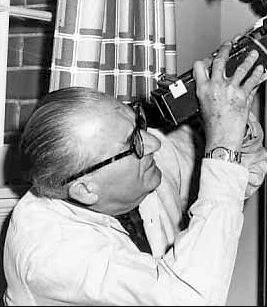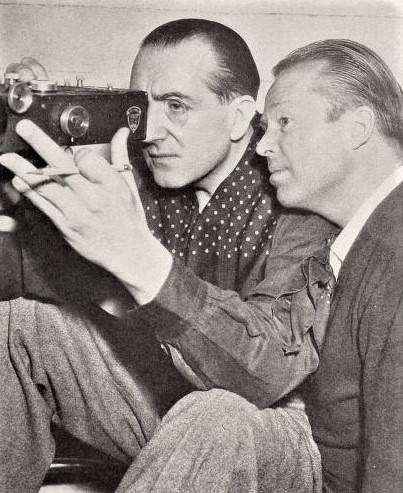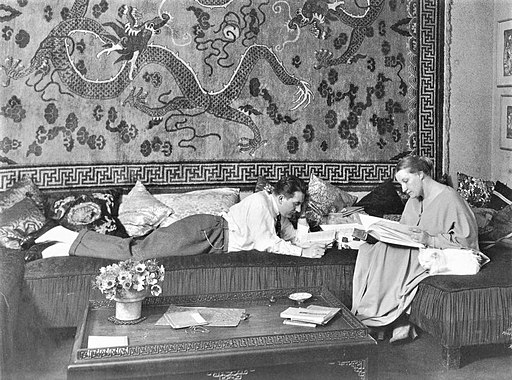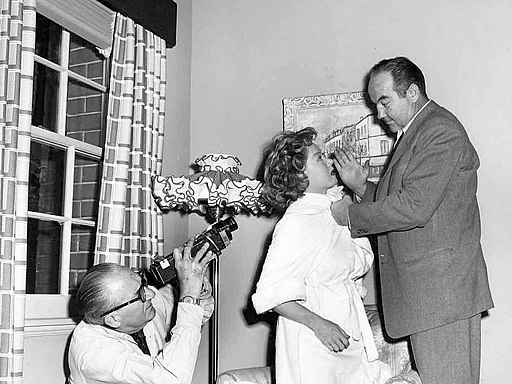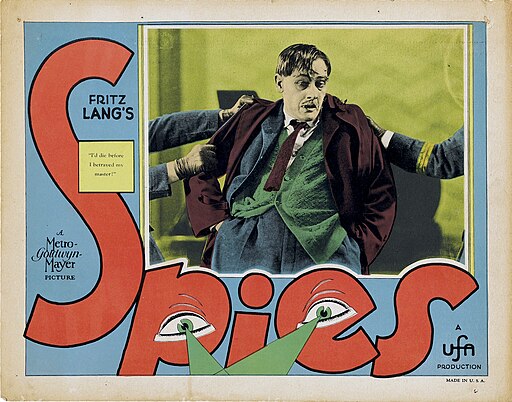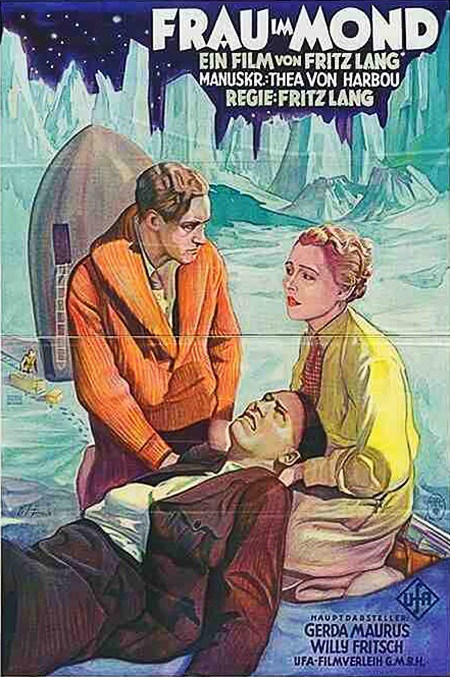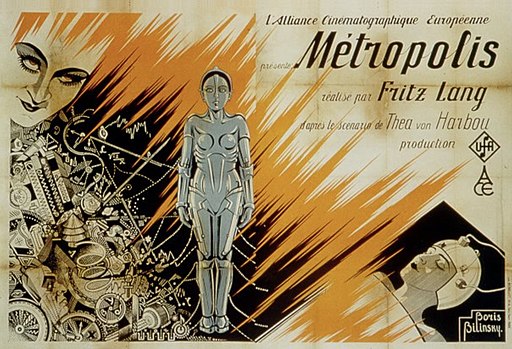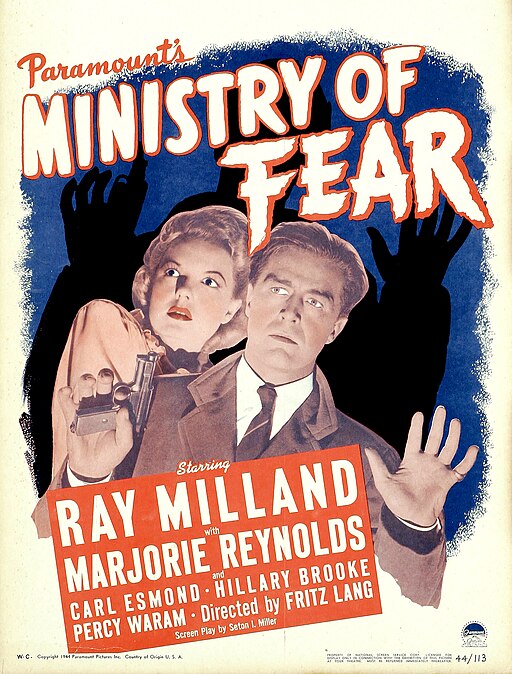Fritz Lang
back| Full Name | Friedrich Christian Anton Lang |
| Born | December 5, 1890 |
| Birthplace | Vienna, Austria-Hungary |
| Died | August 2, 1976 |
| Buried | Forest Lawn Memorial Park, Glendale, California, United States |
| Married to | Lisa Rosenthal (m. 1919; her death 1921) - Thea von Harbou (m. 1922; div. 1933) |
| Children | None |
| Notable films | Metropolis (1927) - M (1931) - D.r Mabuse the Gambler (1922) - The Testament of Dr. Mabuse (1933) - Fury (1936) - The Big Heat (1953) - Woman in the Moon (1929) |
Fritz Lang
"The Master of Darkness"
Fritz Lang's career spanned from the silent film era through the golden age of Hollywood. He is celebrated for his mastery in using imagery and a dark, atmospheric style to explore complex themes like madness, technology, and tyranny.
His films influenced not just the film noir genre but also the development of science fiction cinema. After fleeing Nazi Germany, he continued his career in the United States, where he adapted his style to fit the Hollywood mold while retaining his distinctive thematic and visual flair.
Lang's impact on the film industry is monumental, making him one of the most revered directors in cinema history.
Related
Fritz Lang
Biography and Overview of his Career
Born on December 5, 1890, in Vienna, Austria-Hungary (now Austria), Fritz Lang grew up in a prosperous middle-class family. His father was an architect and his mother was Jewish, although Lang was raised as a Roman Catholic.
He initially studied civil engineering but soon switched to art, showing a keen interest in painting and graphics. This inclination towards the visual arts would later profoundly influence his film style.
Lang's early career saw him working as a painter and graphic artist. He traveled extensively, including to Paris and Asia, which broadened his artistic and cultural perspectives.
During World War I, Lang served in the Austrian army and was wounded multiple times. His experiences in the war deeply affected him and often reflected in the themes of his later films.
After the war, Lang moved into the burgeoning film industry. He started as a screenwriter and soon turned to directing. His early work in German Expressionism, a cinematic style known for its vivid and stark imagery, and bold, often distorted visual style, was instrumental in shaping his later films.
Important Movies:
Lang's breakthrough came with films like "Dr. Mabuse the Gambler" (1922) and "Die Nibelungen" (1924). These films showcased his talent for grand storytelling and visual spectacle.
"Metropolis" (1927), one of his most famous films, was groundbreaking for its special effects and set designs. Despite its initial mixed reception, it's now regarded as a masterpiece and a classic of silent cinema.
Personal Life:
Lang's personal life was complex and often controversial. His first wife, Lisa Rosenthal, died under mysterious circumstances in 1921, and he remarried in 1922 to Thea von Harbou, who collaborated with him on many scripts. They divorced in 1933, partly due to von Harbou's sympathies with the Nazi Party.
Lang himself had a contentious relationship with the Nazis. Despite claims that he fled Germany because of his opposition to the regime, some historical accounts suggest that he was at least temporarily in negotiations with them.
Lang emigrated to the United States in the 1930s as the Nazis rose to power in Germany. In Hollywood, he adapted his style to fit the American studio system but maintained his thematic focus on crime, fate, and moral ambiguity.
His American films, such as "Fury" (1936), "You Only Live Once" (1937), and "The Big Heat" (1953), are considered classics of the film noir genre.
Lang's career slowed down in the 1950s, and he returned to Germany for some projects, such as "The Thousand Eyes of Dr. Mabuse" (1960). However, these did not match the success of his earlier works.
Lang was known for exploring dark, complex themes in his films. He delved into the human psyche, often portraying the darker aspects of human nature and society, such as in "M" and "The Big Heat." This exploration earned him a reputation for being unafraid to confront uncomfortable and morally ambiguous subjects.
He died on August 2, 1976, in Beverly Hills, California. Despite the controversies and complexities of his life, Lang is celebrated for his visionary filmmaking, which left an indelible mark on both German and American cinema.
Lang's films are noted for their dark themes, stylistic boldness, and profound influence on genres like film noir and science fiction. His work has been extensively studied and continues to inspire filmmakers and audiences worldwide.
Interview with Fritz Lang from 1968:
Analysis of Fritz Lang’s Style of Direction:
Fritz Lang's directorial style is renowned for its innovation, thematic depth, and visual flair. Analyzing his style reveals several key characteristics:
Expressionist Roots
Lang's early works in the German Expressionist movement significantly influenced his style. This is evident in the exaggerated, stylized sets and the use of stark lighting contrasts, seen prominently in films like "Metropolis" and "M." Expressionism aimed to externalize inner states of mind, a theme prevalent in Lang's portrayal of characters and environments.
Visual Storytelling
Lang was a master of visual storytelling. He often used architecture and set design to create mood and convey themes. In "Metropolis," the towering, futuristic cityscape symbolizes industrialization's dehumanizing effects, while the underground workers' city reflects their oppression.
His use of shadows and lighting in film noir, such as in "The Big Heat" and "The Woman in the Window," helped establish the visual vocabulary of the genre.
Themes of Fate and Justice
Recurrent themes in Lang's films include fate, justice, and morality. He often explored how characters' destinies were shaped by both personal choices and societal forces. "M" delves into the psychology of a criminal and society's reaction to crime, questioning the nature of justice and vengeance.
His American films, particularly the noirs, frequently depicted flawed characters trapped in situations beyond their control, highlighting the moral ambiguities of life.
Psychological Depth
Lang's characters are often complex and psychologically nuanced. He had a keen interest in exploring the human psyche, particularly the darker aspects of human nature. This is evident in his portrayal of characters like Dr. Mabuse, who embodies psychological manipulation and the abuse of power.
Technical Mastery and Innovation
Lang was known for his technical innovations. "Metropolis" featured groundbreaking special effects for its time, including the use of miniatures and the Schüfftan process, a precursor to modern green-screen techniques.
His meticulous attention to detail in set design, camera angles, and montage contributed significantly to the films' narrative and emotional impact.
Influence of Socio-political Contexts
Lang's work was deeply influenced by the socio-political contexts of his time. His early German films reflect the anxieties of a society recovering from World War I and the rise of Nazism. Later, his Hollywood films mirrored the fears and moral complexities of American society, particularly during the McCarthy era.
Adaptability and Evolution
Lang's move from Germany to Hollywood necessitated a stylistic evolution. While retaining his thematic and aesthetic sensibilities, he adapted to the narrative-driven style of American cinema. This adaptability allowed him to transition seamlessly from silent to sound films and from German Expressionism to the American film noir.
Fritz Lang's direction style, characterized by a blend of visual innovation, thematic complexity, and psychological depth, has had a lasting impact on cinema. His films not only reflected the artistic movements and societal concerns of their times but also helped shape the language of film as we know it today. His influence is seen across various genres and continues to be studied and celebrated in the world of cinema.
Impact of the Movie “M”:
The impact of "M" on Fritz Lang's career was profound and multifaceted, marking a significant turning point both artistically and in terms of his professional trajectory. Released in 1931, "M" was Lang's first sound film and is widely regarded as a masterpiece of world cinema. Here are some key aspects of its impact on Lang's career:
- Masterful Use of Sound: "M" was not just Lang's first foray into sound cinema but also a groundbreaking use of the technology. He utilized sound innovatively, not just for dialogue but to enhance the film's mood and thematic depth. The use of leitmotifs, particularly the whistling of "In the Hall of the Mountain King" by the film's antagonist, was pioneering.
- Expanded Artistic Palette: "M" demonstrated Lang's ability to adapt and evolve his artistic style. Transitioning from silent film to sound, Lang showed that he could masterfully integrate new technology into his storytelling arsenal, enhancing rather than diminishing his expressionist visual style.
- Thematic Sophistication: The film delved into complex themes such as justice, guilt, and societal response to crime. It was a precursor to modern psychological thrillers and film noirs, showcasing Lang's talent for exploring the darker aspects of human nature and society.
- Global Recognition: "M" elevated Lang's international stature. It was not only acclaimed in Germany but also gained significant attention abroad, solidifying his reputation as a leading director of world cinema.
- Precursor to Film Noir: The film's visual style, use of shadows and light, and exploration of moral ambiguity and psychological tension had a considerable influence on the later development of the film noir genre, especially in Hollywood.
- Reflection of Societal Concerns: "M" mirrored the anxieties and turmoil of Weimar Germany. The film’s exploration of a society grappling with crime and justice resonated in a time of political and social upheaval.
- Career in Hollywood: The success and style of "M" were factors that helped Lang transition to Hollywood in the 1930s. His work in Germany, especially "M," had caught the attention of the American film industry, paving the way for his subsequent career in the United States.
Awards and Recognition:
Fritz Lang, despite his significant influence and contributions to cinema, did not receive a vast array of awards and nominations during his career, especially when compared to contemporary standards. This is partly due to the fact that many of the major film awards, like the Academy Awards, were either in their infancy or didn't exist during the peak of his career in the 1920s and 1930s. However, his work has been recognized and celebrated in various ways posthumously.
Awards and Honors During His Lifetime
- Vienna Film Award: Lang was honored with this award for his contributions to cinema.
- Recognition by Film Festivals: While specific awards from early film festivals are less documented, Lang's films were often featured and celebrated at international film festivals throughout his career.
Posthumous Recognition
- Legacy Awards: Many awards and honors have been posthumously bestowed upon Lang's films, recognizing their enduring influence and artistic significance.
- Film Retrospectives: Numerous film festivals and cinematic institutions have held retrospectives of Lang's work, celebrating his impact on the film industry.
- Cultural Impact: Lang's films, particularly "Metropolis" and "M," have been regularly listed among the greatest films of all time in various critics' polls and cinematic studies.
Indirect Recognition
- Influence on Filmmaking: While not a direct award, Lang's influence on the film noir genre and on filmmakers like Alfred Hitchcock and Stanley Kubrick is a significant testament to his legacy.
- Preservation Efforts: Several of Lang's films, such as "Metropolis" and "M," have been restored and preserved, reflecting their importance in film history. These preservation efforts often recognize the cultural, historical, and aesthetic significance of his work.
Modern-Day Acknowledgments
- Film Studies and Academic Recognition: Lang's work is widely studied in film courses and has been the subject of numerous academic papers and books, highlighting his enduring impact on the art of filmmaking.
- Cinematic Tributes: Contemporary filmmakers and critics often cite Lang as a major influence, and his stylistic and thematic elements can be seen in modern films.
Memorable Quotes from Fritz Lang:
On Film and Reality:
- "I am a visual man. I watch, watch, watch. I understand things through my eyes."
- "Cinema is not a thing for fancy. It is life."
Regarding the Art of Filmmaking:
- "The screen must speak, must tell a story; it has its own language. Learn it!"
On the Power of Cinema:
- "Film is not analysis, it is the agitation of the mind; cinema comes from the country fair and the circus, not from art and academicism."
Reflecting on his Way of Directing:
- "Every film must be the complete expression of a director’s point of view."
About His Own Work:
- On "Metropolis": "It's silly and stupid. It's wonderful to look at, full of lights and shadows, of course, but it has no thought to it, nothing."
- "My private life has nothing to do with my films."
On Storytelling:
- "What matters is not what I portray in 'M', but what I don't portray."
On the Role of the Director:
- "A director should not say to his actors 'I am the director' too often."
Regarding Cinematic Techniques:
- "I am a director who uses all the tools of the trade - the script, the actors, the camera, editing, design, music."
On the Influence of His Early Life:
- "I was influenced by the world in which I was living and by the world I wanted to live in."
About His Approach to Filmmaking:
- "I am not a film director with one particular style. I am the style."
Movies Directed by Fritz Lang:
Silent Era
- 1919: "Halbblut" (The Half-Cast) - A lost film. The story involved a conflict between a European and a mixed-race man.
- 1920: "Der Herr der Liebe" (The Master of Love) - Another lost film. A drama about a lord with a reputation for seducing women.
- 1921: "Kämpfende Herzen" (Struggling Hearts; also known as "Der müde Tod") - An ambitious film known for its pioneering use of special effects, telling a romantic and tragic tale of Death and the three candles representing three lives.
- 1922: "Dr. Mabuse, der Spieler" (Dr. Mabuse the Gambler) - A two-part crime drama about Dr. Mabuse, a criminal mastermind, reflecting the corruption in post-World War I Germany.
- 1924: "Die Nibelungen" - A two-part epic based on the Nibelung legend, known for its stunning visuals and scale.
- 1927: "Metropolis" - Lang's most famous film, a groundbreaking science fiction epic portraying a dystopian future with a stark divide between the working class and the elite.
- 1928: "Spione" (Spies) - A spy thriller involving espionage, love, and betrayal.
- 1929: "Frau im Mond" (Woman in the Moon) - One of the first serious science fiction films, depicting a journey to the moon.
Sound Era
- 1931: "M" - Lang's first sound film, a psychological thriller about the hunt for a child murderer in Berlin.
- 1933: "Das Testament des Dr. Mabuse" (The Testament of Dr. Mabuse) - A crime thriller where Dr. Mabuse now manipulates events from an asylum.
- 1934: "Liliom" - An adaptation of the play by Ferenc Molnár, set in a fantasy afterlife.
- 1936: "Fury" - Lang's first American film, a tale of mob violence and revenge.
- 1937: "You Only Live Once" - A crime drama and romance, one of the early noir-like films.
- 1938: "You and Me" - A blend of romance, crime, and musical about the rehabilitation of criminals.
- 1940: "The Return of Frank James" - A Western, the sequel to "Jesse James", about Frank James avenging his brother's death.
- 1941: "Man Hunt" - A thriller about a British hunter who becomes the hunted by the Nazis.
- 1941: "Western Union" - A Western about the building of the Western Union telegraph line.
- 1943: "Hangmen Also Die!" - A war film inspired by the real-life assassination of Nazi leader Reinhard Heydrich.
- 1944: "Ministry of Fear" - A film noir based on a Graham Greene novel, involving espionage during World War II.
- 1944: "The Woman in the Window" - A psychological thriller about a professor who becomes involved in murder.
- 1945: "Scarlet Street" - A noir about a man's descent into crime and despair, influenced by a femme fatale.
- 1946: "Cloak and Dagger" - A war-time spy film set during World War II.
- 1948: "Secret Beyond the Door" - A psychological thriller with elements of Gothic horror.
- 1950: "House by the River" - A moody, melodramatic crime film.
- 1952: "Clash by Night" - A film noir based on a play, dealing with complex relationships and moral dilemmas.
- 1953: "The Blue Gardenia" - A noir focused on a woman accused of murder.
- 1953: "The Big Heat" - A classic film noir known for its brutal violence and corruption.
- 1954: "Human Desire" - A film noir about a complex love triangle and murder.
- 1955: "Moonfleet" - An adventure film set in the 18th century, about smugglers.
- 1956: "While the City Sleeps" - A film noir about journalists hunting a serial killer.
- 1956: "Beyond a Reasonable Doubt" - A noir questioning the death penalty.
- 1957: "Der Tiger von Eschnapur" (The Tiger of Eschnapur) - An adventure film, part of a two-part Indian epic.
- 1957: "Das indische Grabmal" (The Indian Tomb) - The second part of the Indian epic, concluding the adventure.
Final Years
- 1960: "Die 1000 Augen des Dr. Mabuse" (The Thousand Eyes of Dr. Mabuse) - A return to the Dr. Mabuse theme, reflecting the paranoia of the Cold War era.

